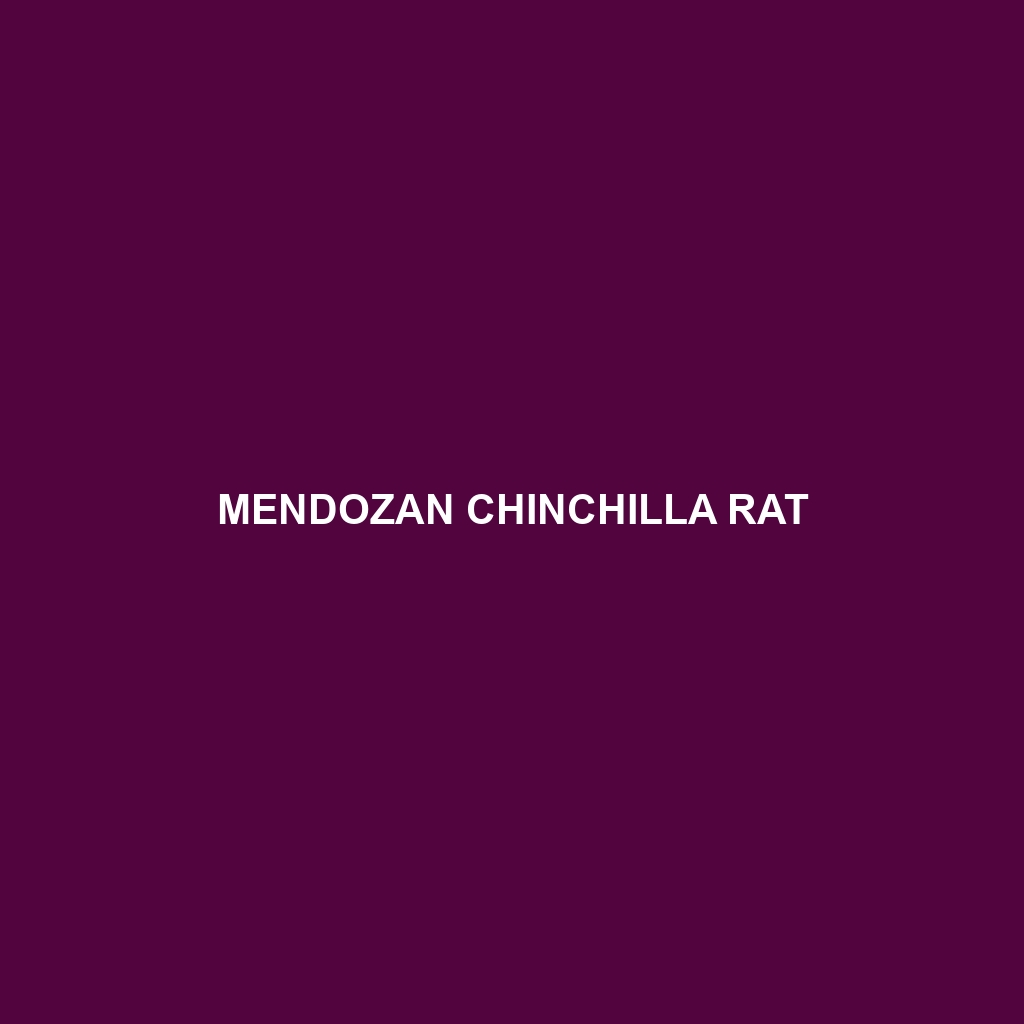Mendozan Chinchilla Rat
Common Name: Mendozan Chinchilla Rat
Scientific Name: Abrocoma budini
Habitat:
The Mendozan Chinchilla Rat is primarily found in the mountainous regions of Argentina, particularly in the Mendoza province. This species thrives in rocky, dry ecosystems characterized by shrubland and sparse forests located at elevations between 1,000 and 3,000 meters. These habitats provide essential cover and food sources, making it an ideal environment for the Mendozan Chinchilla Rat.
Physical Characteristics:
Mendozan Chinchilla Rats are medium-sized rodents, measuring approximately 25 to 30 centimeters in length, excluding their bushy tails. Their fur is densely packed and soft, exhibiting a predominantly grayish-brown color with lighter underparts. A distinctive feature of this species is its large, rounded ears that aid in hearing predators, along with its bushy tail that helps with stability while navigating rocky terrains.
Behavior:
This species is primarily nocturnal, exhibiting crepuscular behavior where it becomes active during twilight hours. Mendozan Chinchilla Rats are social animals often found in small family groups. They are known to communicate through a variety of vocalizations and body language, which helps in maintaining group cohesion. Their agility allows them to climb and navigate rocky outcrops seamlessly, enhancing their survival against predators.
Diet:
The Mendozan Chinchilla Rat is herbivorous, primarily feeding on grasses, seeds, and the leaves of various shrubs found in their habitat. They have adapted to their arid environment by drinking minimal water, obtaining much of their moisture through their food. This specialized diet allows them to thrive in dry conditions where other food sources may be scarce.
Reproduction:
These rodents have a breeding season that typically occurs from late spring to early summer. Mendozan Chinchilla Rats exhibit a relatively short gestation period, usually around 30 days, after which they give birth to litters of 2 to 4 pups. The young are weaned after about four weeks and begin to explore their surroundings shortly thereafter, contributing to the species’ population dynamics.
Conservation Status:
The Mendozan Chinchilla Rat is currently listed as Vulnerable according to the International Union for Conservation of Nature (IUCN). Habitat loss due to agriculture, overgrazing, and human encroachment poses significant threats to their population, necessitating conservation efforts to protect their natural environments.
Interesting Facts:
Interestingly, the Mendozan Chinchilla Rat is related to the more well-known Chinchilla, but it has adapted specifically to the harsh conditions of its mountainous habitat. They are known for their impressive agility, allowing them to leap between rocks and evade predators effectively. Additionally, they can store food in their cheek pouches, much like other rodents.
Role in Ecosystem:
The Mendozan Chinchilla Rat plays a crucial role in its ecosystem by contributing to seed dispersal and providing a food source for various predators. Their burrowing behaviors aid in soil aeration, promoting the health of plant life in their rocky habitat. As a herbivore, they help maintain vegetation levels, thereby supporting other wildlife in the area.
This HTML-structured description incorporates relevant keywords while providing comprehensive information about the Mendozan Chinchilla Rat, aiming to attract search engine interest and educate readers.
